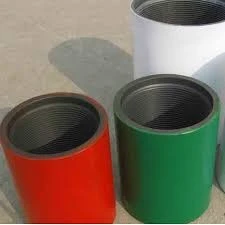- Afrikaans
- Albanian
- Amharic
- Arabic
- Armenian
- Azerbaijani
- Basque
- Belarusian
- Bengali
- Bosnian
- Bulgarian
- Catalan
- Cebuano
- Corsican
- Croatian
- Czech
- Danish
- Dutch
- English
- Esperanto
- Estonian
- Finnish
- French
- Frisian
- Galician
- Georgian
- German
- Greek
- Gujarati
- Haitian Creole
- hausa
- hawaiian
- Hebrew
- Hindi
- Miao
- Hungarian
- Icelandic
- igbo
- Indonesian
- irish
- Italian
- Japanese
- Javanese
- Kannada
- kazakh
- Khmer
- Rwandese
- Korean
- Kurdish
- Kyrgyz
- Lao
- Latin
- Latvian
- Lithuanian
- Luxembourgish
- Macedonian
- Malgashi
- Malay
- Malayalam
- Maltese
- Maori
- Marathi
- Mongolian
- Myanmar
- Nepali
- Norwegian
- Norwegian
- Occitan
- Pashto
- Persian
- Polish
- Portuguese
- Punjabi
- Romanian
- Russian
- Samoan
- Scottish Gaelic
- Serbian
- Sesotho
- Shona
- Sindhi
- Sinhala
- Slovak
- Slovenian
- Somali
- Spanish
- Sundanese
- Swahili
- Swedish
- Tagalog
- Tajik
- Tamil
- Tatar
- Telugu
- Thai
- Turkish
- Turkmen
- Ukrainian
- Urdu
- Uighur
- Uzbek
- Vietnamese
- Welsh
- Bantu
- Yiddish
- Yoruba
- Zulu
Exploring the Use of Perforated Pup Joints in Oil and Gas Operations
Exploring Perforated Pup Joints Their Role and Importance in Oil and Gas Operations
Perforated pup joints are specialized piping components used in the oil and gas industry to facilitate the effective flow of fluids during drilling and production operations. These short lengths of pipe have strategically placed perforations, which allow for the controlled flow of hydrocarbons or other fluids while preventing unwanted formation solids from entering the pipeline. Understanding the significance, design, and application of perforated pup joints is crucial for maximizing efficiency and safety in energy operations.
Design and Construction
Perforated pup joints are typically constructed from robust materials that can withstand high pressures and corrosive environments encountered in oil and gas extraction. Commonly made from carbon steel or stainless steel, these components are engineered to handle the extreme conditions of drilling sites. The perforations in the pup joint are strategically designed to allow fluid to flow through while ensuring structural integrity. Their lengths vary, but they are generally shorter than standard pipe lengths, hence the name pup joint.
The perforation pattern and size can be customized based on the specific application requirements and the characteristics of the formation being accessed. For instance, in formations with high sand production, the perforations might be designed to minimize the entry of sand while maximizing fluid flow. This tailored design helps in mitigating the wear and tear of both the pup joints and the associated drilling equipment.
Applications in Oil and Gas Operations
Perforated pup joints are utilized in various phases of oil and gas operations, particularly in well completions, stimulation, and production processes. During well completion, these joints facilitate the efficient flow of oil or gas from the reservoir to the surface equipment. They play a vital role in ensuring that the produced fluids can efficiently move through the tubing to the surface, which is essential for maximizing production rates.
perforated pup joints

In stimulation processes like hydraulic fracturing, perforated pup joints are critical as they help manage the inflow of fracturing fluids and proppants into the formation
. Their design allows for effective circulation, ensuring that the fracturing fluids can access the targeted zones in the reservoir without causing significant disruptions.Furthermore, during production, perforated pup joints can be integrated into the tubing string to support the flow of oil and gas, particularly in situations where the well is deviated or horizontal. They enable operators to optimize the well’s performance and can be adjusted easily when modifications are necessary.
Advantages and Considerations
The use of perforated pup joints offers several advantages. Firstly, they enhance the efficiency of fluid flow, which can lead to increased production rates and overall profitability. Additionally, their ability to minimize issues related to solids intrusion helps in reducing maintenance costs and extending the lifespan of the production equipment.
However, certain considerations must be taken into account when using perforated pup joints. Selection of the appropriate perforation design and placement is crucial, as improper choices can lead to reduced flow performance or even equipment failure. It is also essential to regularly monitor the conditions within the well to identify any changes that could necessitate adjustments to the perforated pup joint configuration.
Conclusion
Perforated pup joints are indispensable components in the oil and gas industry, playing a key role in optimizing fluid flow during drilling and production. Their specialized design allows for tailored solutions that enhance operational efficiency while minimizing risks associated with solids intrusion. By understanding their function and implementing best practices, operators can maximize the productivity of their wells and contribute to the sustainable extraction of energy resources. As the industry continues to evolve, the innovation and application of such components will remain significant in driving efficiency and safety in oil and gas operations.
-
Tubing Pup Joints: Essential Components for Oil and Gas OperationsNewsJul.10,2025
-
Pup Joints: Essential Components for Reliable Drilling OperationsNewsJul.10,2025
-
Pipe Couplings: Connecting Your World EfficientlyNewsJul.10,2025
-
Mastering Oilfield Operations with Quality Tubing and CasingNewsJul.10,2025
-
High-Quality Casing Couplings for Every NeedNewsJul.10,2025
-
Boost Your Drilling Efficiency with Premium Crossover Tools & Seating NipplesNewsJul.10,2025







